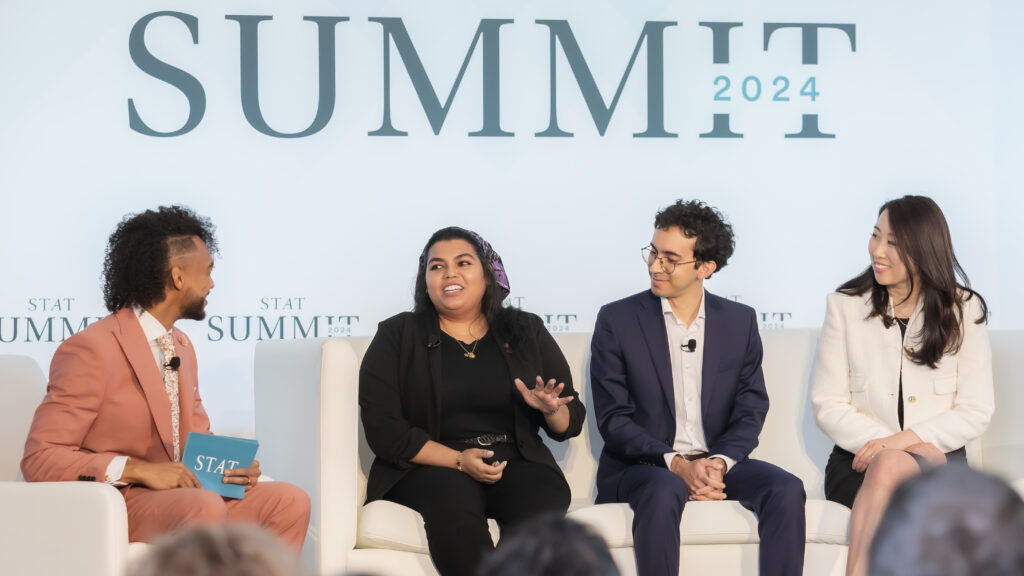Inspiration for a career in science can come from any number of sources. For Diane Shao, a neurogeneticist at Boston Children’s Hospital and general partner at Legacy Venture Capital, her mother motivated her to take the plunge into biotech. For Jorge Diego Martin-Rufino, a physician scientist at the Broad Institute and Boston Children’s Hospital, it was the pioneering geneticist Eric Lander, who advised him during his Ph.D. And Ramisa Fariha, a biologist at Brown University’s RNA Center, credits a more unlikely figure: The famed wrestler Dave Bautista.
Despite these differences, all three are members of this year’s class of STAT Wunderkinds, which recognizes rising stars in health and medicine. Speaking at the 2024 STAT Summit in Boston, the trio discussed the importance of translating research into practical help for patients as well as the need to address structural issues that make delivering care difficult.
advertisement
“We get to see the true unmet medical needs, but rather than just accepting the situation as is, we can really try to push to create new therapies that are still not there,” Martin-Rufino said.
Each of the three is working to translate research into innovative ways to diagnose diseases. Fariha explained that she was inspired to work in women’s health after reading about Bautista’s ex-wife’s struggle with ovarian cancer. Coming from a small town in Bangladesh, “we never really talked about reproductive health, and to me, it was surprising that I had this organ, and I had the potential of getting ovarian cancer down the line, and I never knew anything about it. It was not taught in school,” she said.
In the years since, she’s used her training as a biologist to work on developing low-cost, accessible diagnostics for polycystic ovarian syndrome and ovarian cancer.
advertisement
Martin-Rufino, who is both a clinician and a researcher, is working to better understand the human genome and what every piece of it does. Specifically, he said, his goal is to “shift hematology, which is the specialty that treats disorders from the blood, from a treatment-heavy specialty, toward a preventative specialty. We want to be able to treat cancers even before they arise.”
Similarly, Shao is working to understand how genetic variations between individual cells in a developing brain can lead to developmental disorders. Traditionally, she said, people think of babies as getting two different sets of genes — one from each parent. But “every time a cell divides, it makes mistakes,” she explained. “And so if you just think about how many brain cells we have — let’s say 6 billion neurons — it’s at least 6 billion mistakes in the body.”
While the three are working on potentially transformative discoveries, they agreed that access to the fruits of those discoveries are often a barrier for patients. “The biggest challenge is still access for patient care,” Shao said. “The families that come to see me really have a certain level of resources. They’re the ones who have the money to fly across the world or the country, to take time off of work and school, to bring their child in. I think that’s not only a health problem, but it’s a societal systems problem.”

